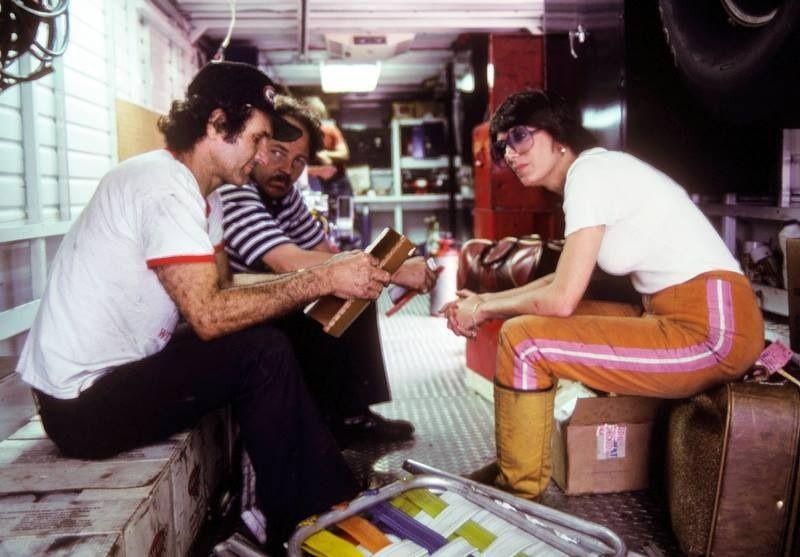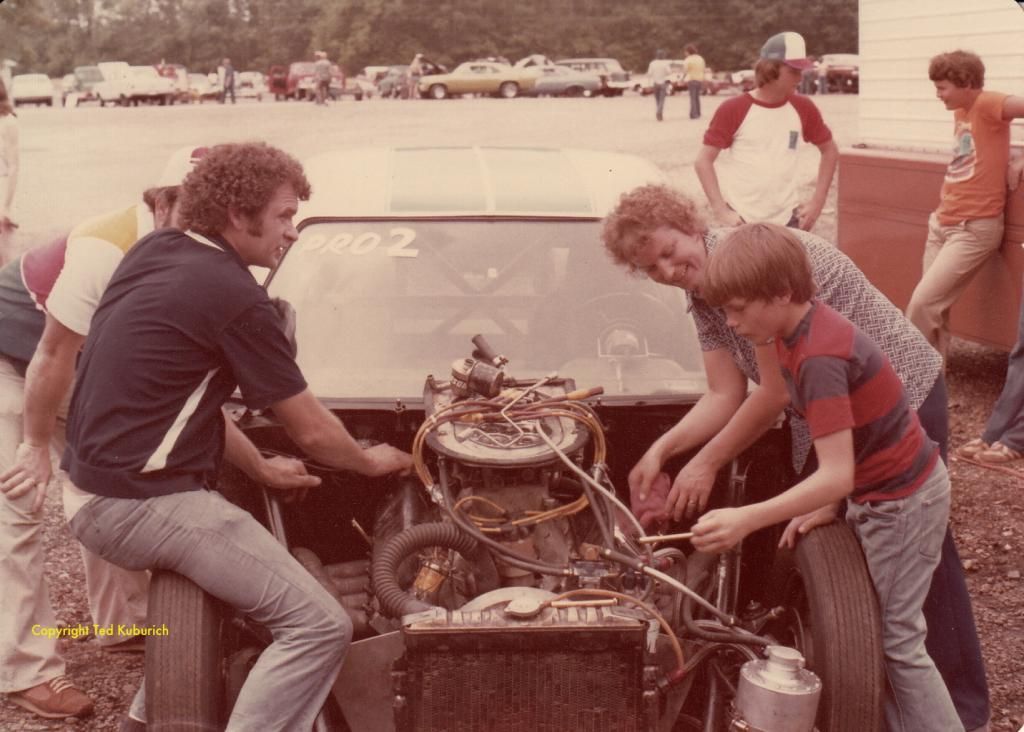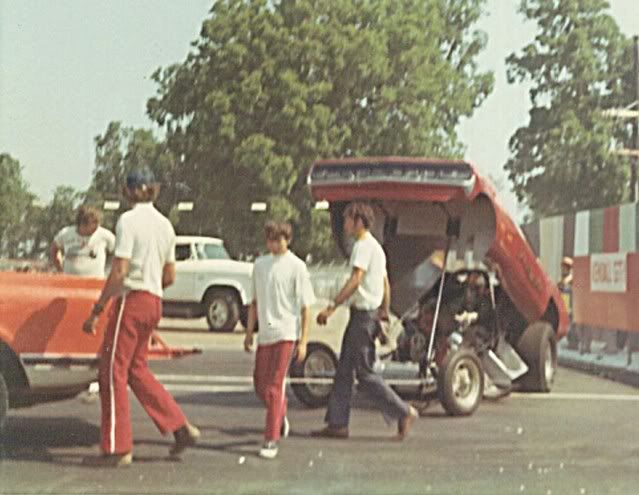I thought I'd show you some of the people who've done an exceptional job of covering drag racing's history -- some of them from the very beginning.

This was taken at the Gatornationals in 2006. From the left, Andy Willsheer, an English photographer who has probably had more American drag racing images published overseas than anyone else. The Big Guy, Hall of Famer Steve Reyes. Jeff Tinsley, former staff shooter for SS&DI and later a staff photographer for the Smithsonian Institute. He was the official Smithsonian shooter when Garlits's car was brought in. Richard Brady, a long time NHRA shooter who began freelancing at places like Rockford Dragway, Union Grove and U.S. 30 back in the Sixties. He's now doing nostalgia articles for Drag Racing Action Magazine. Dave Kommel, one of drag racing's most experienced shooters (for AutoImagery, primarily). Uh, me! Bob Harmeyer, who primarily shot advertising photography for the likes of Goodyear, Budweiser and others. And finally, the late Les Welch, another great shooter with a four decade history in the sport.

Left to right, Carol Johnson, whose first published photo appeared in Car Craft in 1974. Since then she's shot national advertising photos for the likes of Dodge and Budweiser, while her editorial photos appeared in Car Craft, Sports Illustrated for Kids, Drag Racing Action and CompetitionPlus. com. Jim McCraw, former editor of Super Stock & Drag Illustrated, former editor of Hot Rod Magazine, current contributor to publications like (gulp!) the New York Times. Hall of Famer Dave Wallace, who was writing for Drag News and other publications before most of you were born! And finally, the late, great Hall of Fame Founders Award winner John Raffa. Raffa is another SS&DI graduate who went on to become editor and then publisher of Car Craft Magazine. He also served an important stint at National Dragster where his age and experience enabled him to broach topics to NHRA Founder Wally Parks that others couldn't or wouldn't. It was Raffa who convinced Wally (in 1985) that the cars were no longer the stars, it was the drivers that NHRA needed to elevate to superstar status.
Jon Asher




